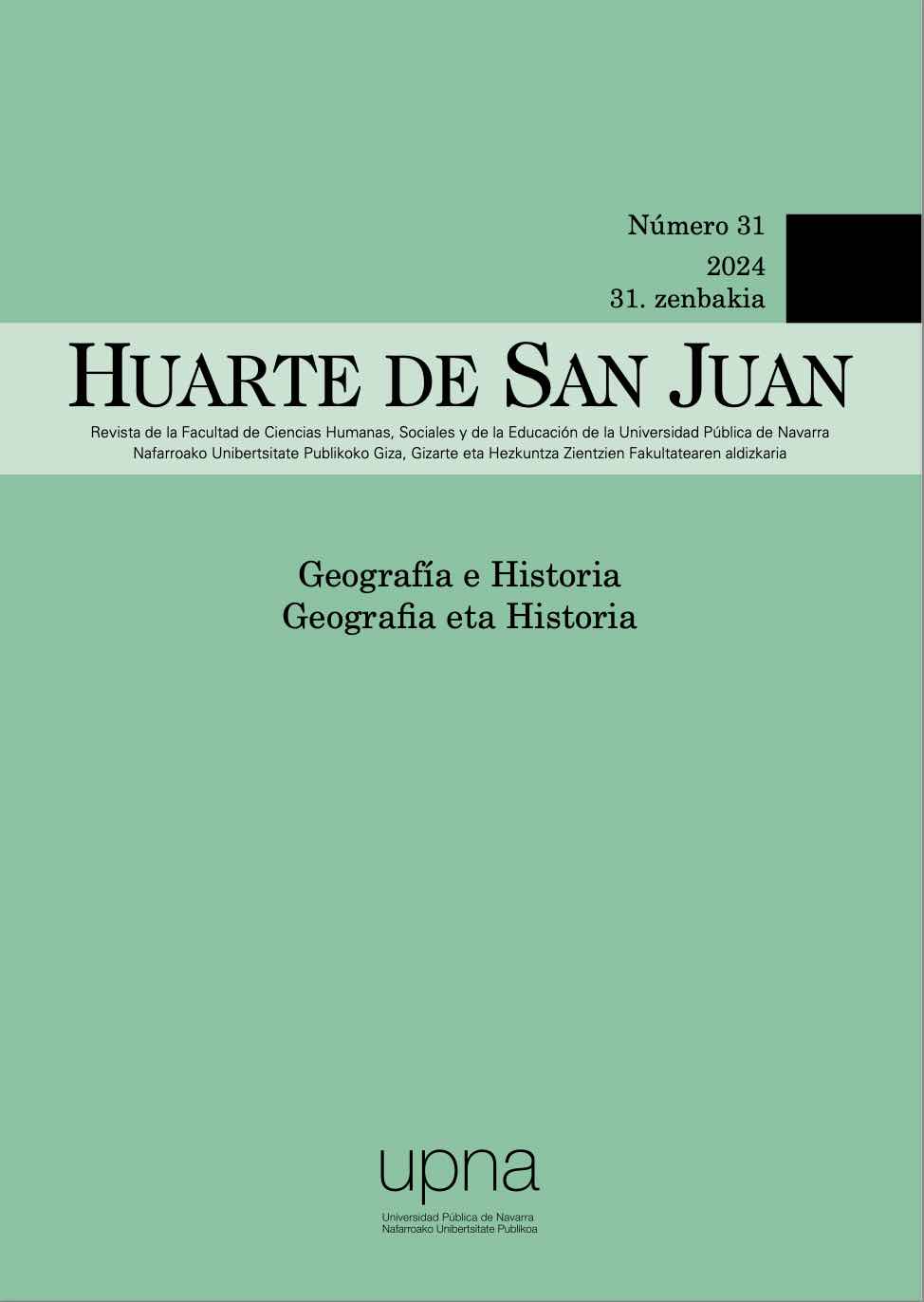Popular culture in Pompeian parietal graffiti: erotic and amatory graffiti
DOI:
https://doi.org/10.48035/rhsj-gh.31.5Keywords:
Graffiti, Popular culture, Social relationships, Sexuality, HistoriographyAbstract
Behind the marble landscape of the temples and public buildings of Rome there existed a reality characterised by a populace that came to the city in search of opportunities. However, the classical authors did not write many descriptions of the daily lives of these individuals, except when they went from discontent to violence. Only the meanest and most vile aspects of their behaviour were recurring elements in satirical literature and comedy. The information related to this group has reached us through the texts of what we could call high society. But what were these individuals like and how did they think? The answer to this question lies in avoiding traditional sources and placing emphasis on graffiti that shows us a side of popular culture different from that of the elite and allows us to rethink social relations and Roman identity.
Downloads
References
Adams, Colin, The Latin Sexual Vocabulary, Londres, Duckworth, 1982.
Alföldy, Geza, Nueva historia social de Roma, Sevilla, Universidad de Sevila, 2012.
Baird, Jennifer A., y Claire Taylor, Ancient Graffiti in Context, Nueva York, Routledge, 2011.
Barbet, Alix, «La representation des gladiateurs dans la peinture murale romaine», en Kevin Alexandre Kazek (coord.), Gladiateurs et chasseurs en Gaule, Rennes, Presses Universitaires de Rennes, 1987, pp. 69-74.
Benefiel, Rebeca R., «Urban and Suburban Attitudes to Writing on Walls? Pompeii and Environs», en Irene Berti, Katharina Bolle, Fanny Opdenhoff y Fabian Stroth, Writing Matters: Presenting and Perceiving Monumental Inscriptions in Antiquity and the Middle Ages, Berlin, De Gruyter, 2017, pp. 353-374.
Cavallo, Guglielmo, «Los graffiti antiguos: entre escritura y lectura», en Francisco M. Gimeno Blay y María Luz Mondigorr Llavara (eds.), Los muros tienen la palabra, Valencia, Universidad de Valencia, 1997, pp. 61-72.
Courier, Cyril, La plèbe de Rome et sa culture (fin du IIe siècle av. J.-C. – fi. Du Ier siècle ap. J.-C.), Roma, Ecole Française de Rome, 2014.
D’Avino, Michele, La donna a Pompei, Nápoles, Loffredo Napoli, 1964.
Díaz, María Elena, «The satiric penny pen press for workers in Mexico, 1900-1910: a case study in the policisation of popular culture», Journal of Latin American Studies, 22.3, 1990, pp. 497-526.
DiBiasie, Jacqueline, «Public in Private: The Distribution and Content of Graffiti in Pompeian domus and hospitia», en Carlos F. Noreña y Nikolaos Papazarkadas, From Document to History: Epigraphic insights into the Greco-roman world, Leiden, Brill, 2019, pp. 197-218.
Feitosa, Lourdes, Amor e sexualidade: o masculino e o femenino em grafites de Pompéia, Sao Paulo, Annablume/Fapesp, 2005.
Feitosa, Lourdes, «Graphium en acción: los grafitos de Pompeya», en Pablo Ozcáriz Gil (coord.), La memoria en la piedra, Pamplona, Gobierno de Navarra, 2012, pp. 175-186.
Feitosa, Lourdes, y Renata Garraffoni, «Dignitas and Infamia: rethinking marginalized masculinities in early principate», Studia Historica. Historia Antigua, 28, 2010, pp. 57-73.
Franklin, James L. (jr.), «Literacy in the Roman empire: mass and mode», en Mary Beard et al., Literacy in tbe Roman World, Journal of Roman Archeology, Michigan, 1991, pp. 77-98.
Funari, Pedro Paulo A., La cultura popular en la Antigüedad, Sevilla, Gráficas Sol, 1991.
Funari, Pedro Paulo A., A vida quotidiana na Roma Antiga, São Paulo, Annablume, 2003.
Garraffoni, Renata y Pedro Paulo A. Funari, «Reading Pompeii’s Walls; A Social Archeological Approach to Gñadiatorial Graffiti», en Tony Wilmott (ed.), Roman Amphitheatre and Spectacula: a 21st-Century Perspective, Oxford, BAR (1946), 2009, pp. 185-193.
Garraffoni, Renata, Gladiadores na Roma Antiga: dos combates às paixões cotidianas, São Paulo, Annablume, 2005.
Greenidge, Anel Hendy Jones, Infamia. Its Place in Roman Public and Private Law, Adamant Media Corporation, 2000.
Herreros González, Carmen, «Sequere me: tras la huella de las prostitutas en la antigua Roma», en José Ignacio Barriobero Neila (coord.), Un breve viaje por la ciencia, La Rioja, Universidad de La Rioja, 2006, pp. 71-74.
Hunink, Vincent, Felice è questo luogo. 1000 graffiti pompeiani, Roma, Apeiron Editori, 2013.
Ijalba Pérez, Pablo, «¿Una “historia desde abajo” de la Antigüedad es posible?: el análisis de la historiografía sobre la Roma Antigua», Studia Historica. Historia Antigua, 29, 2011, pp. 237-249.
Keegan, Peter, Graffiti in Antiquity, London-Nueva York, Routledge, 2014.
Lagner, Martin, Antike Graffitizeichnungen, Motive, Gestaltung und Bedeutung, Wiesbaden, Ludwig Reichert, 2001.
Montero Cartelle, Enrique, Priapeos. Grafitos amatorios pompeyanos. La velada de la fuente de venus. El concúbito de Marte y Venus (Reposiuano). Centón Nupcial (Ausonio), Madrid, Biblioteca Clásica Gredos, 1981.
Novillo López, Miguel Ángel, La vida cotidiana en Roma, Madrid, Sílex Editorial, 2020.
Pesando, Fabrizio, «Gladiatori a Pompei», en Adriano La Regina (ed.), Sangue e Arena, Milano, Electa, 2001, pp. 175-197.
Ruiz Gutiérrez, Alicia, «Los grafitos parietales de las ciudades romanas», en Actas de los XVIII Cursos Monográficos sobre el Patrimonio Histórico, Santander, Universidad de Cantabria, 2009, pp. 57-75.
Solin, Heikki, L’interpretazione delle iscrizioni parietali, Faenza, Fratelli Lega, 1970.
Toner, Jerry, Setenta millones de romanos. La cultura del pueblo en la antigua Roma, Barcelona, Crítica, 2012.
Varone, Antonio, Erotica pompeiana. Iscrizioni d’amore sui muri di Pompei, Roma, L’Erma di Bretschneider, 1994.
Varone, Antonio, L’erotismo a Pompei, Roma, L’Erma di Bretschneider, 2000.
Vavassori, Marina, «La personalizzazione della ceramica domestica», Sylloge Epigraphica Barcinonensis, X, 2012, pp. 81-99.
Downloads
Published
How to Cite
Issue
Section
License
Copyright (c) 2024 MIGUEL ÁNGEL NOVILLO LÓPEZ

This work is licensed under a Creative Commons Attribution-NonCommercial-NoDerivatives 4.0 International License.
La información referente al sistema de autoarchivo y política de derechos de explotación establecido por esta revista puede consultarse en DULCINEA.









